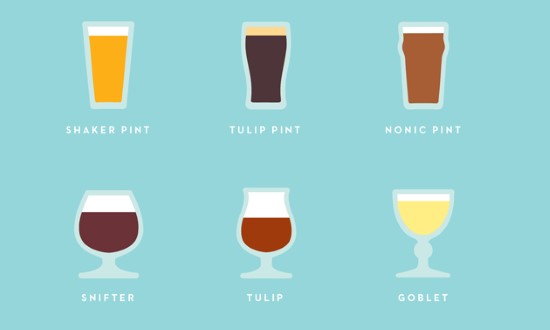Bursting the Bubble of 10 Persistent Beer Myths
Craft beer has become a vibrant, thriving community, but as a movement one could say it’s still in its infancy. The “average” craft drinker these days might best be imagined as someone who recently began discovering the joys of a well-made pale ale. They’re excited to learn more about the history of beer and the beer industry, but slightly intimidated by the breadth of their task in absorbing hundreds of years of history, style guidelines and general knowledge. Looking for knowledge, they turn to their friends. And that’s how myths get passed on.
For whatever reason, beer is conducive to myth and misinformation. Perhaps it’s because certain stories are more romantic to tell than the historical reality, or some adages are so oft-repeated that they just become accepted as fact. For whatever reason, if you’re in a beer bar, you’ll almost invariably hear one or two of these myths perpetuated. But we might as well take one more shot at sharing some of the truth, both to educate the new beer drinkers and disabuse the veterans of just a tiny bit of snobbery.
1. “India pale ale” is so-called because it was brewed for British troops in India, and highly hopped to survive the journey by sea from Britain to India.
The IPA origin story is the granddaddy of all beer myths, the kind of thing that EVERYONE has heard (or in some cases, read on a brewpub placemat). However, the historical record suggests quite a bit to the contrary. Just ask beer historian Martyn Cornell, who has done the research because—get this—the guy’s an actual, professional historian. With primary sources and old brewing ledgers and everything! For more than a decade, Cornell has been sharing IPA truths and shooting down many aspects (although not all) of the “ships to India” story, all while being largely ignored. You should read what he has to say, but the main gist is this: Beer in the “India pale ale” style was being made in the U.K. long before it was ever sent to India, and simply happened to become associated with the country later on, acquiring the name we know today. But that doesn’t sound quite as compelling on a beer label.
2. Stouts are more “heavy” and caloric
Also known as the “meal in a glass” myth, which posits that stouts are somehow more filling or calorie-rich than other beer styles, likely because of their roasty flavor profiles. But in reality, most are no more “filling” than any others. Guinness is of course the classic example: At 4.2% ABV and 125 calories per 12 oz serving, the classic Guinness Draught is both lower in alcohol and calories than a 5% ABV Budweiser, which clocks in at 145 calories per bottle. Bud Light, meanwhile, has the same 4.2% ABV and only 15 fewer calories, at 110 per 12 oz. So in reality, a Bud Heavy would be more accurately described as the “meal in a glass” than your standard Guinness, and this holds true for most other stouts as well. When in doubt, look at the alcohol content. The higher it is, the more caloric that beer is likely to be.
3. “Lagers are cheaper at the store, so they’re cheaper to make.”
This misconception is the result of seeing 30-packs of Busch Light, Keystone or Natural Light retailing for the same price as your favorite six-packs of craft beer. With such cheap options on the shelf, drinkers develop a perception of lagers as “cheap beer,” but in reality it costs significantly more for a brewery to produce a lager than a comparable ale. The reason all boils down to time—lager yeast ferments cold and slow, adding weeks if not months to the total time it takes to make each batch. This ties up fermenters for longer periods of time, which means the brewery can produce and sell less total beer. For huge brewing corporations such as Anheuser Busch, this is less important because of economies of scale, but to a craft brewer working on small margins, it’s incredibly significant. And that’s why you see fewer craft lagers than ales—the brewers don’t want to either take a loss on them or increase prices to levels where they would break even.
4. The shaker pint is an abomination
Craft beer has a tendency to have a good idea, and then drag that idea, kicking and screaming, past the point of practicality. Case in point: The shaker pint, which you’ll recognize as the iconic “pint glass” seen in just about every American bar. As so many articles have pointed out, the shaker pint was never actually meant for drinking but for shaking cocktails before it became attached to the burgeoning beer movement. It’s not an ideal vessel for aromatic beers—but honestly? “Not ideal” does not mean it’s a disaster being served an IPA in a shaker pint, as vehemently as the guy with the waxed mustachio sitting next to you at the bar may disagree. Let’s face it—most of us are not supernaturally sensitive in terms of our olfactory or tasting prowess, and having the “wrong” glassware from time to time is ultimately much less important than what’s in the glass in the first place. Can we agree on that? Use whatever glassware you’ve got—anything is better than drinking straight from the bottle.

-

-

-

-

-

-

-

-

-

-

-

-

-

-

-

-

-

-

-

-

-

-

-

-

-

-

-

-

-

-

-

-

-

-

-

-

-

-

-

-









































